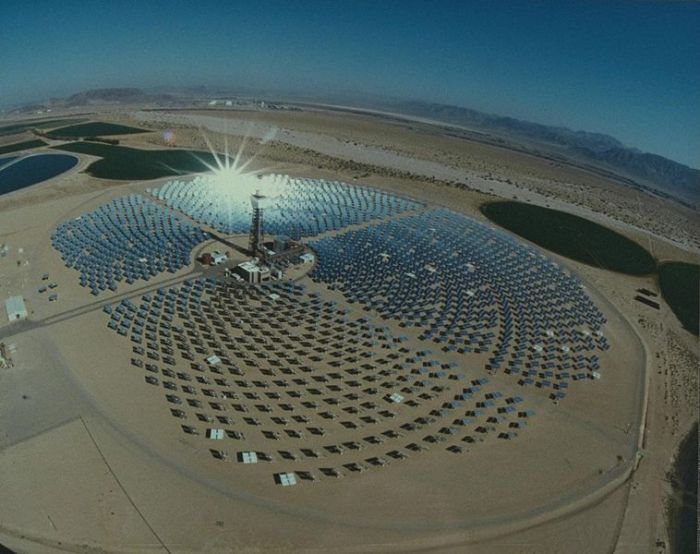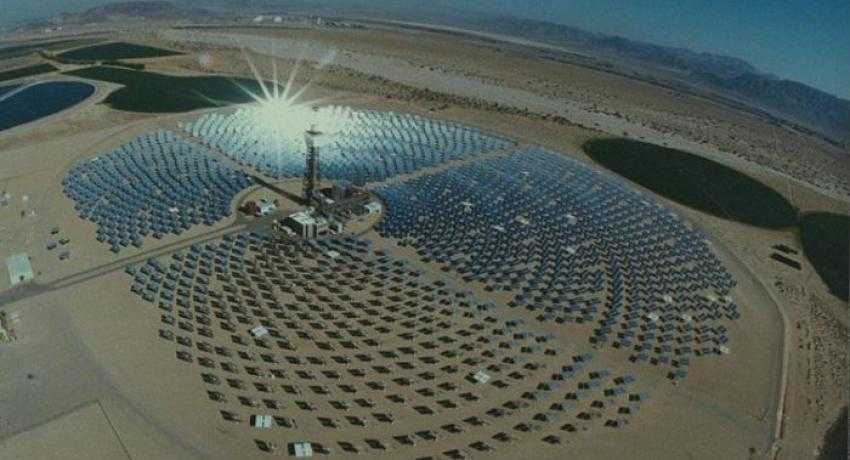Concentrated solar will add 1.3 GWs to US’s energy mix in 2013
 The news about concentrated solar power (CSP) or solar thermal has been relatively quiet for about a year, but during that period many of the giant CSP projects planned for the U.S. Southwest were under construction. And now they’re likely to start making some more noise. After all, a total of 1,318 megawatts of new CSP projects are expected to be online by the end of 2013, according to a new guide from CSP last week, ahead of CSPToday USA 2013 conference in June.
The news about concentrated solar power (CSP) or solar thermal has been relatively quiet for about a year, but during that period many of the giant CSP projects planned for the U.S. Southwest were under construction. And now they’re likely to start making some more noise. After all, a total of 1,318 megawatts of new CSP projects are expected to be online by the end of 2013, according to a new guide from CSP last week, ahead of CSPToday USA 2013 conference in June.
Though CSP relies on the sun to produce electricity like PV, it relies on a much different process. And while it can make sense to build a 2 kilowatt PV array on a rooftop, it’s not really feasible—thus far—to build a electric generating CSP system that small. In fact, most CSP systems are more than 5 megawatts in size to take advantage of the economies of scale that make them cost-efficient electric generators. While it can make sense to build a 500 megawatt PV farm in the right region, it may make even more sense to build a CSP plant that’s the same size, mainly because CSP offers one thing that heretofore PV has not been able to offer—cost-effective energy storage.
The new guide from CSP Today discusses the roll CSP has in the U.S.’s energy supply and how the country will likely be the world leader in the technology moving forward. “The modern age of CSP can arguably be traced back to the 354 megawatt Solar Energy Generating Systems (SEGS) arrays in the Mojave Desert, which now make up the oldest operating plant in the world, as well as one of the largest,” the guide said.
The guide observed that projects coming online this year will dwarf that project. For instance, BrightSource’s nearby 392 megawatt Ivanpah Solar Electric Generating System will be not just bigger than the original SEGS, but “a new world leader in terms of size when it is completed this year.” The 1.3 gigawatts of CSP capacity under construction also is more than in any other market in the world, the guide said.
The guide cited a number of reasons why the technology makes sense in the U.S. For instance, “The US has ample high-irradiation desert areas suitable for the development of large-scale CSP projects, particularly in California, Arizona and Nevada,” it said. It also noted, “The prime materials for CSP plant construction are all readily available in the U.S. and thus are not dependent on foreign trade relations.” It also noted that the systems can have secondary market, like delivering process heat. That makes the technologies useful for other sorts of applications like hydrocarbon and mineral extraction processes.
Perhaps CSP's most valuable attribute, however is its ability to store energy, allowing it to produce electricity even when the sun’s not shining. “If you have CSP with storage you can modify ramp rates, keep them more in line with grid requirements, because the storage gives the flexibility to stop putting solar energy into the grid at a given time, or if needed, to put more into the grid at that time,” said Tex Wilkins, executive director of the CSP Alliance.




